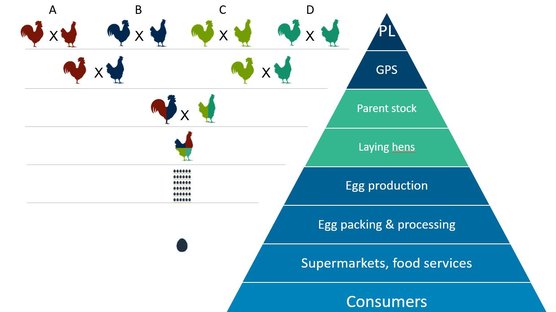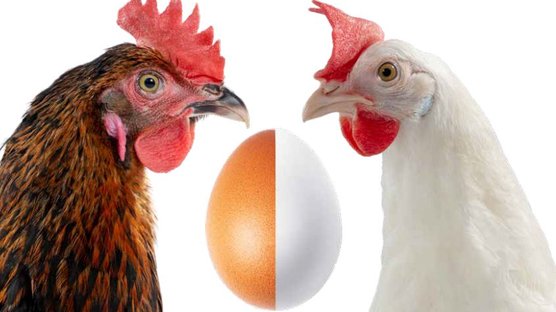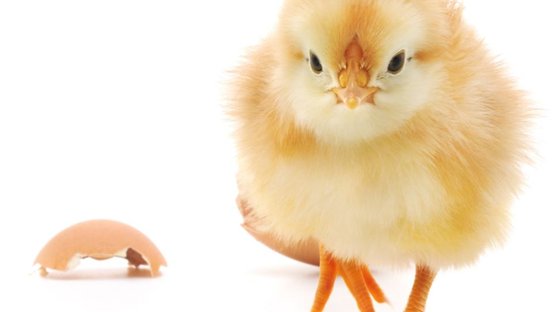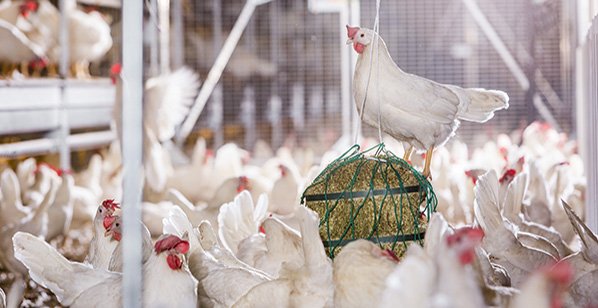
Published on Sept. 20, 2019
North Carolina trial results reveal the top layer performer
The North Carolina Layer Performance and Management Test is an annual, independent trial meant to assist the poultry industry in evaluating the performance of the top commercial layer products in various housing management systems.
The report on the single laying cycle, part of this trial was published at the end of 2018. The single cycle production records of the laying phase commenced at 17 weeks of age and continued through 89 weeks of age. From that report, it’s clear to see Hendrix Genetics products outperform the competition in every system.
The Hendrix Genetics products were present in the following production systems used for the single laying cycle data collection: Conventional Cage (C) – Colony Housing System (CS) – Enriched Colony Housing System (ECS) – Cage-free System (CF).
The advantage of the Hendrix Genetics birds over their competitors is evident when examining the hen housed egg production (See table 1 and 2). The biggest difference can be found in the white birds in cage free systems: the Hendrix Genetics birds produced over 42 eggs more per hen housed!
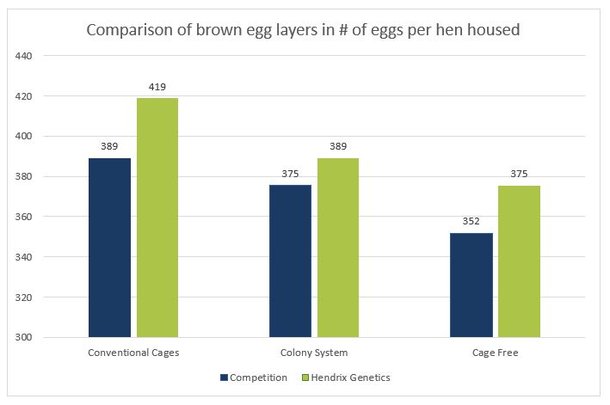
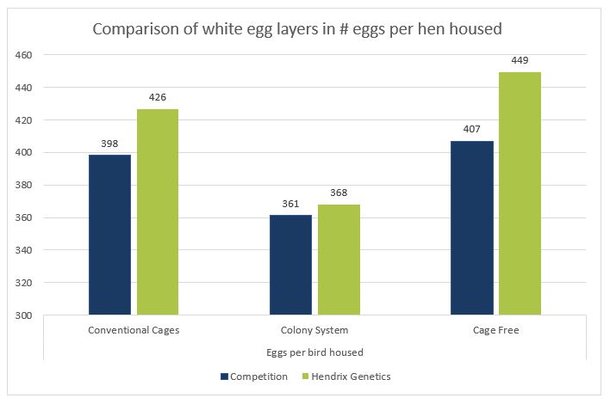
High egg production is important, but the biggest cost for egg producers is the cost of their feed. From the following graphs, a very consistent pattern can be observed over all systems and for both egg shell colors. Hendrix Genetics products are more efficient compared to their competitors, i.e. they need less feed to produce an egg.
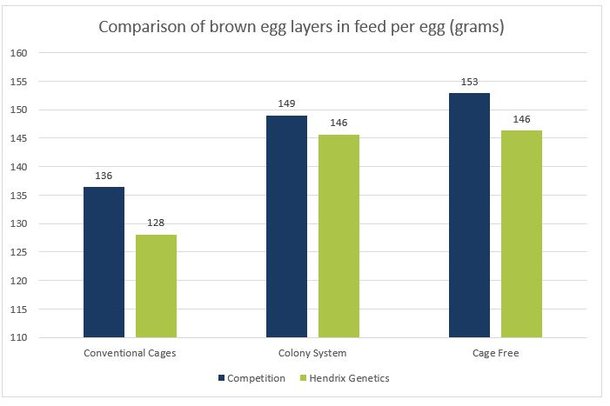
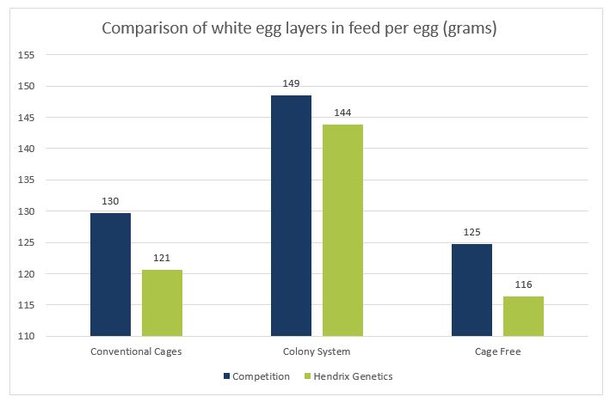
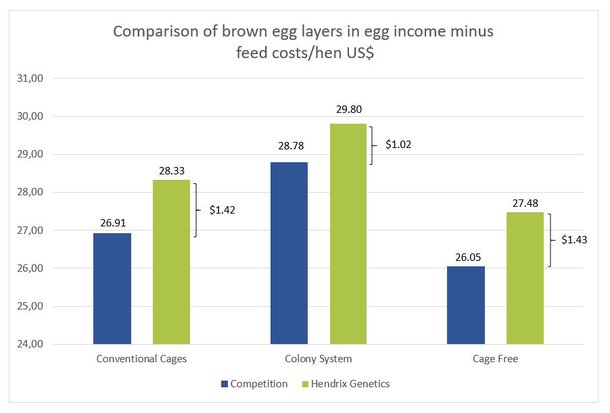
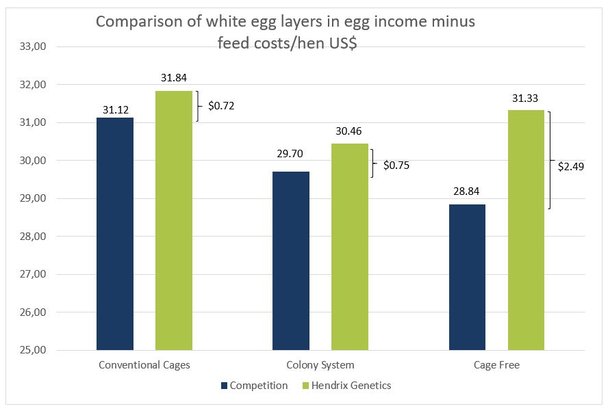
From the analysis of these independent trials, we can see that Hendrix Genetics is, again, at the head of the pack, no matter which housing system or color. On a total average, Hendrix Genetics products deliver the egg producer $ 1.30 more per hen.
Superior product performance is a direct result of investment in the R&D trials and breeding program. We will continue to invest in our breeding program in order to deliver well-rounded, strong performing products that deliver value to the egg producer and the value chain.
Footnote:
The data used for this overview has been derived from the North Carolina State University website.
Below you will find the Hendrix Genetics breeds that participated in the tests, we have indicated in brackets in which housing system they have been tested.
White egg layers: Bovans White (C, CS, ECS), Shaver White (C, CS, ECS), Dekalb White (C, CS, ECS, CF), Babcock White (C, CS, ECS, CF), Babcock B-400 White (C, CS, ECS)
Brown egg layers: ISA Brown, Bovans Brown (C, CS, ECS, CF)
The following non-Hendrix Genetics breeds participated: White egg layers: Hy-Line W80 (C, CS, ECS, CF), Hy-Line W36 (C, CS, ECS, CF), Hy-Line White Exp (CF), LSL Lite (C, CS, ECS, CF), H&N Nick Chick (C, CS, ECS, CF), Novowhite (C, CS, ECS, CF)
Brown egg layers: Hy-Line Brown, Hy-Line Silver Brown, Lohmann Brown Lite, Novobrown, TETRA Brown
As the bird population and densities were the same for both the ECS and CS systems we grouped the data together, referred to Colony Systems in the above graphs.
Calculations:
Feed Per Egg: the average daily feed intake was given in kg per 100 hens/day. The test lasted for 504 days (72 weeks). Out of this we have calculated the average total feed intake per bird, divided this by the number of eggs per bird hen housed.
Egg income per hen: from the report we have deducted the feed costs per bird from the total egg Income per bird.

